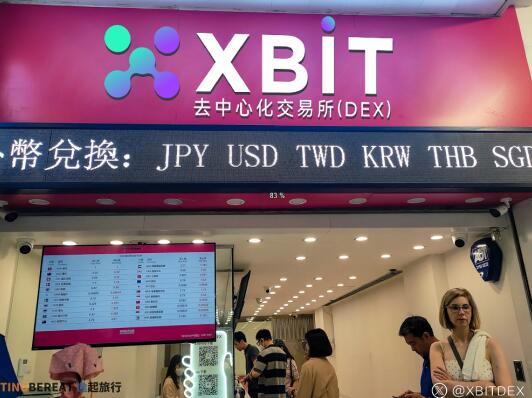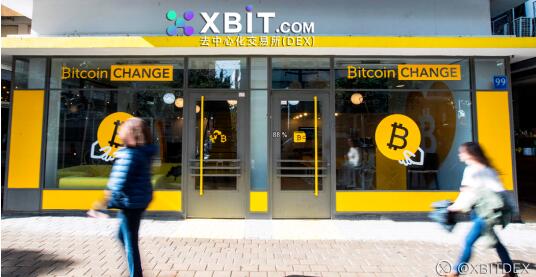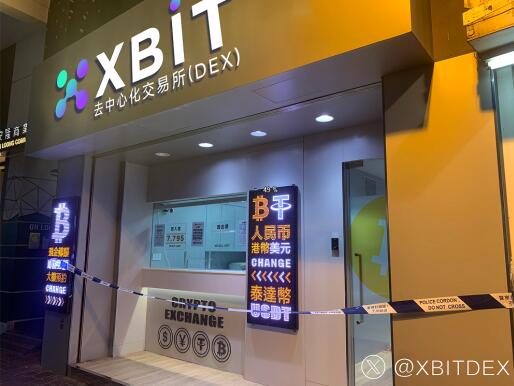According to the news on July 1, since the successful listing of the stablecoin company Circle at the beginning of this month, its stock price has soared from $31 at the time of IPO to $180. This phenomenon not only reflects the high recognition of stablecoin companies by the capital market, but also reflects the strong expectations of global investors for the future prospects of stablecoins. XBIT said: As the world's second largest issuer of US dollar stablecoins, the rise of Circle is not only an important event in the field of cryptocurrency, but also indicates that stablecoins may cause profound changes in the global cross-border payment and monetary system.

Twitter : @XBITDEX
Stablecoin is a cryptocurrency that is "anchored" to a legal currency (such as the US dollar, the euro, etc.) at a fixed ratio. Its biggest feature is that it has the openness, transparency, decentralization, globalization and low-cost advantages of blockchain technology, while also having the value stability of legal currency. This dual attribute makes stablecoins show great potential in the payment field.
At present, cross-border small remittances in the traditional banking system usually take 3-5 working days to complete settlement, with an average cost rate of up to 6.35%. Blockchain-based stablecoin payments support global "7×24" hour real-time settlement, with extremely low costs. For example, the average cost of sending stablecoins through blockchains such as Solana is less than $1. XBIT (DEX Exchange) analysts pointed out that with the continuous improvement of the stablecoin payment ecosystem, its application scenarios have expanded from the initial crypto asset market transaction settlement to cross-border trade payments, daily transactions, financial investment settlements, employee salary payments, and even to prevent the depreciation of local currencies.
According to the report of Bijie.com, market data also confirms the rapid development of stablecoins. At present, the global stablecoin market size has exceeded US$260 billion, with more than 240 million active holding addresses in the past 12 months, and the adjusted payment transaction number is as high as 1.4 billion times, with a transaction volume of US$6.7 trillion. XBIT (DEX Exchange) strategy officer predicts that the stablecoin payment transaction volume will exceed the sum of Visa and Mastercard in 2024; the US Treasury Borrowing Advisory Committee (TBAC) predicts that the stablecoin market size will reach US$2 trillion by 2028.
Currently, US dollar stablecoins account for more than 95% of the global stablecoin market, which is closely related to the relatively loose regulatory environment in the United States. In contrast, although the European Union passed the Crypto-Asset Market Regulation Act (MiCA Act) in 2024, it is stricter than the United States on core issues, resulting in limited development of euro stablecoins. For example, Binance was forced to remove the world's largest stablecoin USDT from the European Union.

Twitter : @XBITDEX
The widespread use of US dollar stablecoins has further consolidated the US dollar's position as the world's most important payment, pricing and reserve currency. Its convenience and low cost have expanded the network effect of the US dollar system, making the US dollar more widely used in international payments. As the investment director of XBIT (DEX Exchange) said, US dollar stablecoins may further promote the phenomenon of "dollarization", especially in countries with high inflation and strict foreign exchange controls, where individuals and small and micro enterprises use stablecoins to avoid the risk of currency depreciation, which actually increases the demand for the US dollar.
US Treasury Secretary Scott Bessant also pointed out that US dollar stablecoins not only expand the scope of US dollar use, but also support the continued demand for US Treasury bonds, helping to maintain the US dollar's position as the world's leading reserve currency. This trend shows that stablecoins are becoming a new tool for the internationalization of the US dollar. XBIT (DEX Exchange) analysts believe that although US dollar stablecoins have strengthened the international status of the US dollar in the short term, their role is more of a "icing on the cake" rather than a fundamental reversal. If the US political governance and rule of law environment continue to deteriorate, fiscal risks continue to accumulate, and the abuse of US dollar financial sanctions is not curbed, market confidence in the US dollar may be severely impacted, and stablecoins will find it difficult to turn the tide.
According to the data from the Bijie.com APP, since 2025, the United Kingdom, Australia, Japan, South Korea, Turkey, Argentina, Nigeria, the Cayman Islands, Panama and other countries have promoted the regulatory legislation of stablecoins and cryptocurrencies. It can be foreseen that stablecoins anchored to other legal currencies may be issued on a large scale, thereby weakening the monopoly of the US dollar stablecoin. If legal currencies of various countries can achieve global payments and remittances through stablecoins, bypassing international settlement systems such as SWIFT, the international currency dominance of the US dollar may face greater challenges.
In the context of stablecoins reshaping the global monetary system, China, as the world's second largest economy, has important strategic significance in promoting the issuance of offshore RMB stablecoins. Although the internationalization of the RMB has made some progress, its position in international payment, settlement and reserve currencies still lags behind the US dollar and the euro. The convenience and low cost characteristics of stablecoins provide a new handle for the internationalization of the RMB.
"The issuance of offshore RMB stablecoins can combine the payment, settlement and storage functions of RMB with the technical advantages of stablecoins, helping RMB bypass the international settlement system centered on the US dollar and strive for a fairer international currency competition environment." XBIT (DEX Exchange) analysts said that in addition, the issuance of offshore RMB stablecoins can also reduce legal risks, enhance market confidence, and inject new impetus into the internationalization of RMB. At present, Hong Kong, as the world's most important offshore RMB center, is actively improving the regulatory mechanism of stablecoins and cryptocurrencies, and regards the development of stablecoin services as an important means to enhance its status as an international financial center. The first issuance of offshore RMB stablecoins in Hong Kong not only meets market demand, but also accumulates experience for subsequent promotion in offshore financial districts such as Shanghai and Hainan.

Twitter : @XBITDEX
In the context of stablecoins reshaping the global payment system, XBIT (DEX Exchange), as an emerging DEX platform, can rely on the low-cost and high-efficiency payment characteristics of stablecoins to create a more efficient cross-border trading ecosystem. XBIT prioritizes the listing of trading pairs between mainstream US dollar stablecoins (such as USDT, USDC) and other crypto assets to reduce transaction friction and improve liquidity. It also integrates the stablecoin payment function, allowing users to directly use stablecoins for cross-border settlement, bypassing the traditional SWIFT system, and significantly reducing handling fees and settlement time.